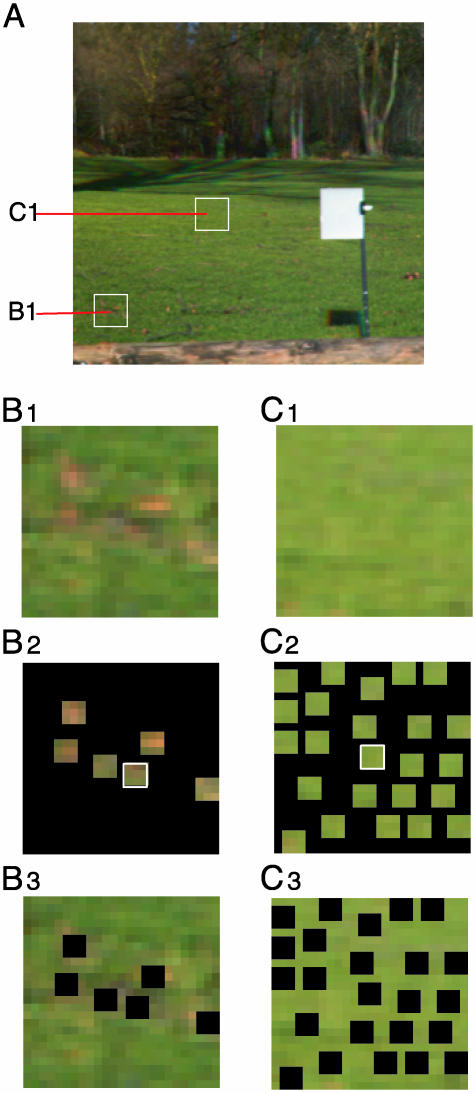Fig. 2.
Sampling of the organization of spectral returns in natural images. (A) Representative image taken with a calibrated hyperspectral camera by using 31 optical interference filters to span the visible light spectrum (400-700 nm) at 10-nm intervals (4). The image resolution was 256 × 256, with each pixel subtending ≈0.056 × 0.056°. To remove the influence of the chromatic properties of the illuminants under which the hyperspectral images were taken, the radiance spectrum of each pixel was divided by the radiance spectrum of a reference gray calibration card that had been placed in each scene. (B1) Blow-up of one of the boxed regions in A. (B2) Each such region was analyzed by first assessing the spectral characteristics of a patch near the center of the region, representing an element of the potential target (white outline). If the spectral characteristics of this patch were relatively uniform (see Methods), it was accepted as a target element and the rest of the region was evaluated for spectrally similar areas (in this example, the five other squares); the set of such spectrally similar areas was then defined as the target. (B3) The remaining area of the scene (i.e., all of the region except the blacked-out target set) was defined as the context. (C1) Example of another region of the image in A, similarly analyzed, in which the target comprises a greater number of elements. (C2) As before, the target elements were identified by their spectral similarity to a central reference patch (white outline). (C3) The context defined by exclusion, as in B3.

